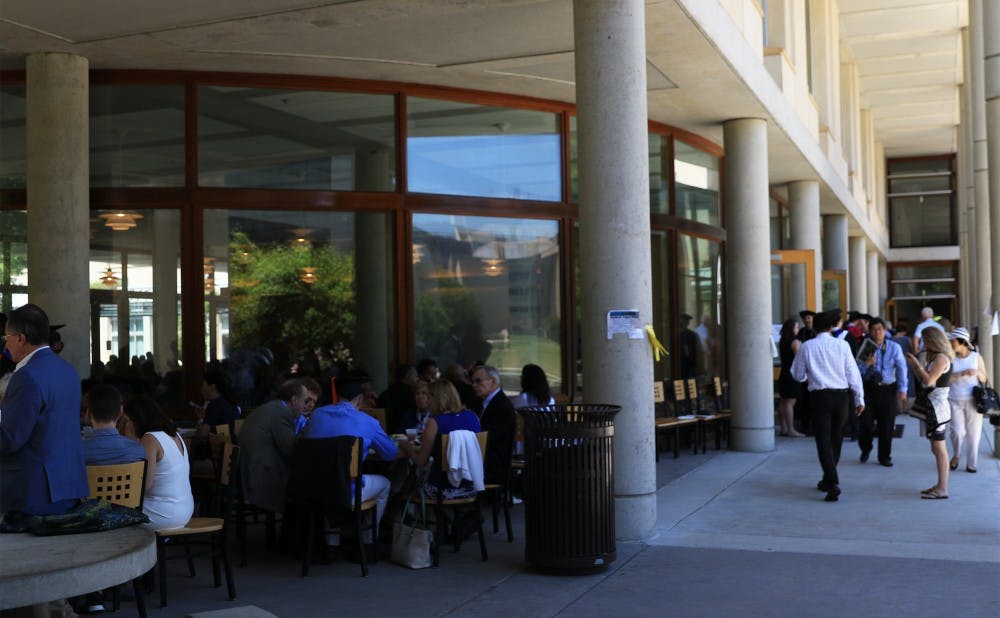Inside what was formerly Blue Express, you will not find sandwiches or pizza, but rather laser cutters, large tools and project tables.
Now called the Design Pod, the space houses a pilot course for 50 first-years created by Ann Saterbak, professor of the practice in the department of biomedical engineering and Sophia Santillon, assistant professor of the practice in the department of mechanical engineering and materials science.
The course, titled EGR Design and Communication, aims to teach beginning engineering students how to design physical and electrical prototypes. The course's creators hope that students will also have a better idea of the direction they want to take with their engineering education after taking the course.
“By taking this course, I think the students will be more interested in working on projects," Saterbak said. "Usually when engineering students do project-based work, they enjoy it and want to do more.”
The course is a pilot for a three-course program called "Habits of the Duke Engineer." The two other courses—one in computing and the other in data science—will begin in the spring.
Saterback said the current course shows students what engineering really is, aside from the required physics, math and chemistry classes. Students in the course can help tackle real-life challenges by working with clients in Durham, engineering professors, technical mentors and upperclassmen.
“To have students take things that are not engineering and expect them to decide, ‘yes, I want to be an engineer’ or ‘no, I don’t want to be an engineer,’ that is, I think, kind of foolish,” Saterbak said in reference to standard math and chemistry courses.
The course is split into two parts. Throughout the first half of the semester, students talk to clients, come up with research ideas, figure out design criteria, generate solutions to problems and finally select a solution. The process is “intellectually challenging, but fully a part of the engineering design process,” Saterbak said.
The second half of the course involves designing prototypes. Students use low-cost materials to physically create the project and test the design with multiple iterations. The process exposes first-years to new testing methods and tools that will be useful throughout their engineering education and careers.
As half of the semester has come and gone, both Saterbak and Santillon said the course has gone smoothly. Santillon noted that the instructors have tempered their expectations for the students because many of them have never take engineering courses before.
"Obviously [we] are going to expect more out of their senior students who have taken all the engineering classes than they would of freshman who are just coming in," she said.
From Saterbak’s perspective, the students are reacting well to the class and enjoying it.
“People are there; people are working cooperatively; the students seem happy," Saterbak said. "I have been very pleased with the commitment of the students and the quality of their work.”
Get The Chronicle straight to your inbox
Signup for our weekly newsletter. Cancel at any time.

